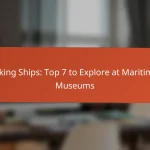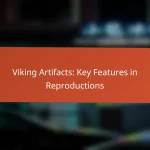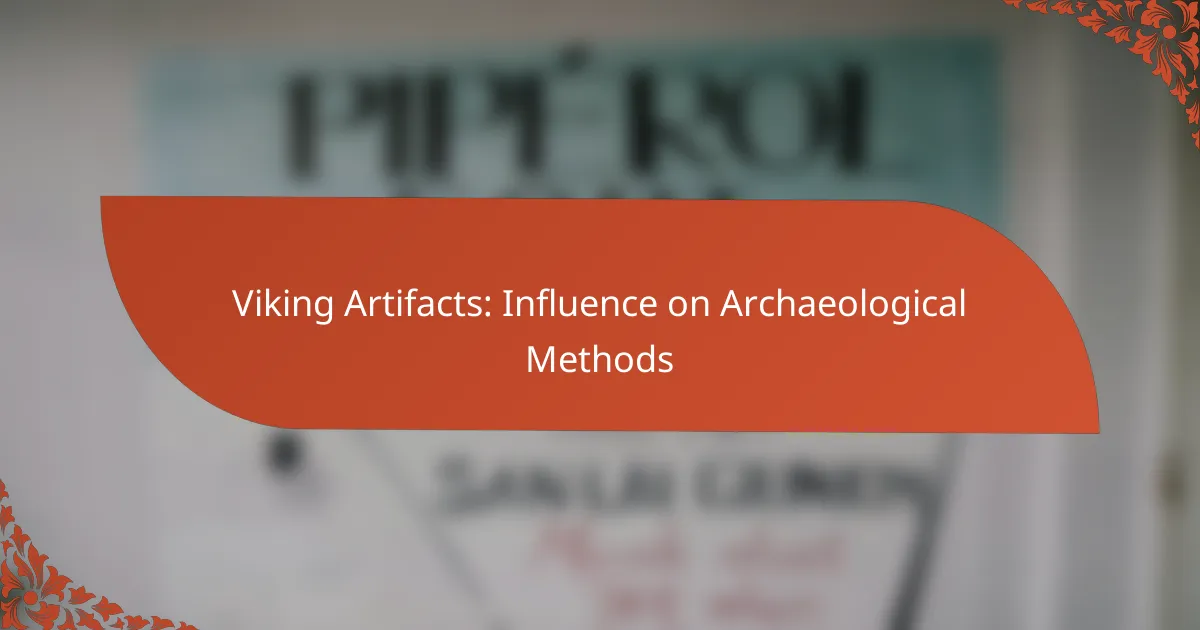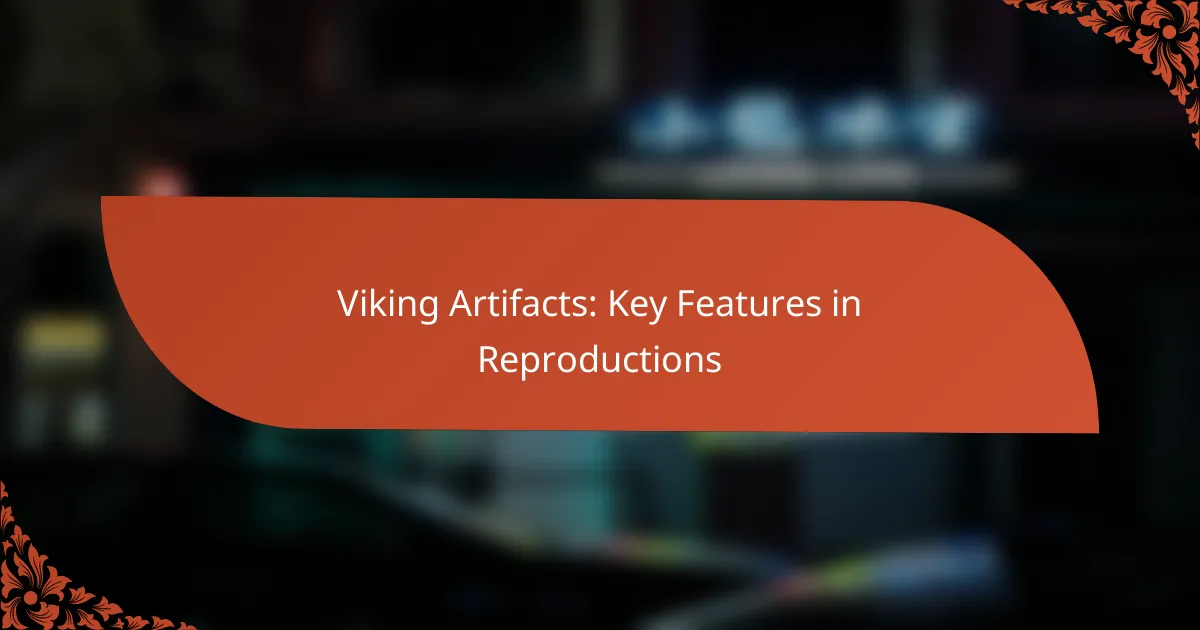Viking artifacts play a crucial role in shaping modern archaeological methods, enhancing the analysis of historical objects and integrating advanced technologies for better insights. Items such as swords, runestones, and ship burials provide valuable information about Viking culture and craftsmanship, while also fostering collaboration with historians. This synergy not only improves the accuracy of interpretations but also deepens our understanding of the societal values of the Viking Age.
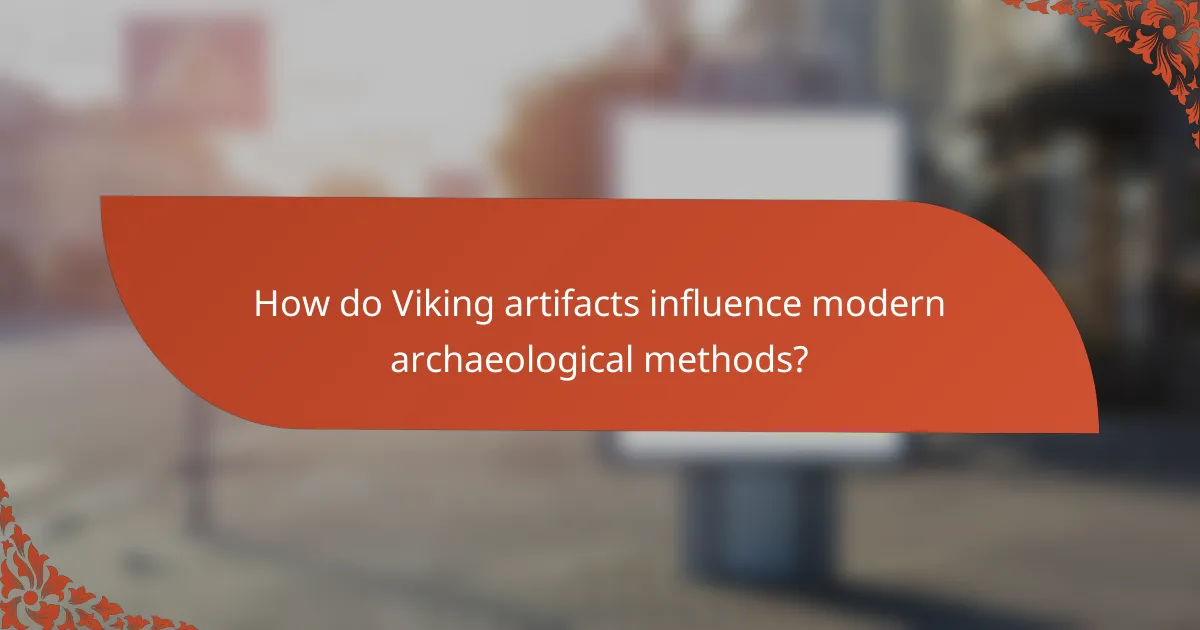
How do Viking artifacts influence modern archaeological methods?
Viking artifacts significantly shape contemporary archaeological methods by enhancing artifact analysis, integrating advanced technologies, and fostering collaboration with historians. These influences lead to more accurate interpretations and a deeper understanding of Viking culture and society.
Integration of artifact analysis
Modern archaeology increasingly relies on detailed artifact analysis to extract information about past societies. Viking artifacts, such as tools, weapons, and everyday items, provide insights into trade, craftsmanship, and social structures. By employing methods like typology and contextual analysis, archaeologists can categorize artifacts and understand their significance within the broader cultural framework.
For example, analyzing the wear patterns on a Viking sword can reveal its usage and the social status of its owner. This type of analysis helps create a narrative of Viking life that is both rich and nuanced.
Use of technology in excavation
Technological advancements play a crucial role in modern archaeological excavations, particularly in sites associated with Viking artifacts. Techniques such as ground-penetrating radar (GPR) and 3D scanning allow archaeologists to visualize subsurface features without extensive digging. This non-invasive approach minimizes damage to the site while maximizing data collection.
Additionally, digital databases and GIS (Geographic Information Systems) enable researchers to analyze spatial relationships between artifacts and their contexts, leading to more informed conclusions about Viking settlements and their interactions.
Collaboration with historians
Collaboration between archaeologists and historians enhances the understanding of Viking artifacts and their cultural implications. Historians provide context through written records, which can complement archaeological findings. This interdisciplinary approach allows for a more comprehensive view of Viking life and societal structures.
For instance, aligning archaeological evidence of trade routes with historical texts can clarify the economic interactions of Viking communities. Such collaborations often lead to innovative research projects that bridge gaps between material culture and historical narratives.
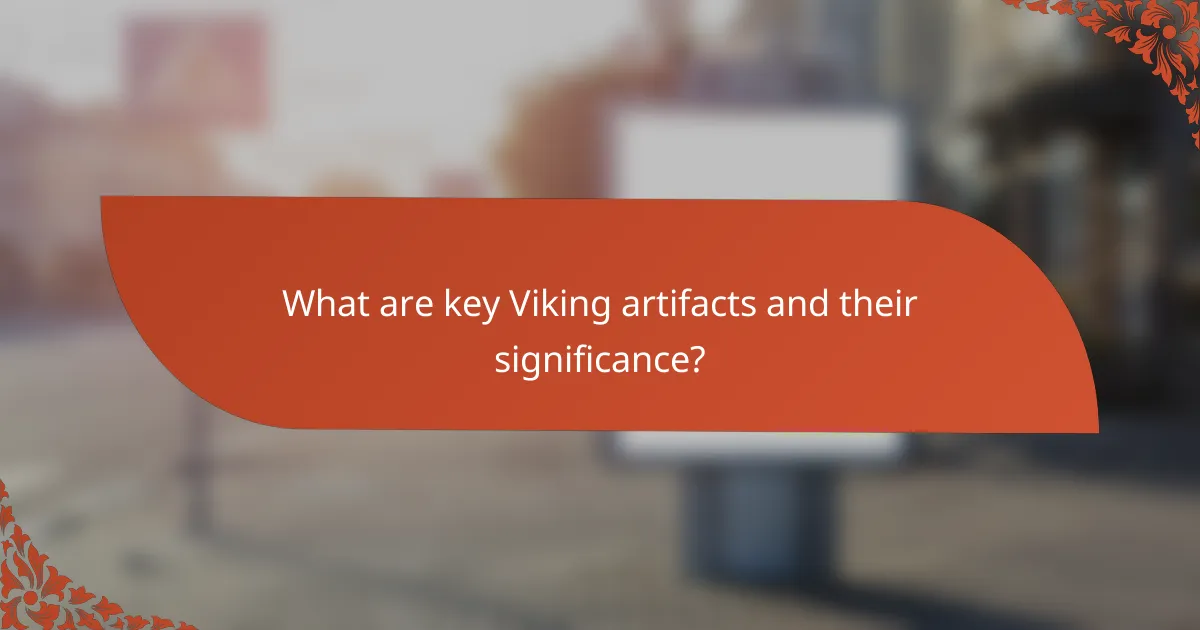
What are key Viking artifacts and their significance?
Key Viking artifacts include swords, runestones, and ship burials, each offering profound insights into Viking culture, craftsmanship, and societal values. These artifacts not only highlight the technical skills of the Vikings but also serve as historical records that inform modern archaeological methods.
Viking swords and their craftsmanship
Viking swords are renowned for their exceptional craftsmanship, often characterized by intricate designs and high-quality materials. Typically made from iron, these swords were forged using techniques that allowed for flexibility and strength, making them effective in battle.
Many swords feature decorative elements such as engravings or inlays, which reflect the owner’s status and wealth. The craftsmanship involved in creating these weapons provides valuable information about the technological advancements of the Viking Age.
Runestones as historical records
Runestones are significant artifacts that serve as historical records, often inscribed with messages commemorating individuals or events. These stones provide insights into Viking language, culture, and beliefs, revealing how they viewed their world and their place within it.
Typically erected in prominent locations, runestones functioned as markers of territory or memorials. The inscriptions often include genealogies, which help archaeologists understand social structures and lineage during the Viking Age.
Ship burials and cultural insights
Ship burials are a unique aspect of Viking funerary practices, where ships were used to transport the deceased to the afterlife. These burials often included grave goods such as weapons, tools, and personal items, reflecting the deceased’s status and beliefs about the afterlife.
The presence of ships in burials indicates the importance of seafaring in Viking culture, as well as their complex views on death and the afterlife. Analyzing these burials provides archaeologists with a deeper understanding of Viking societal norms and rituals.
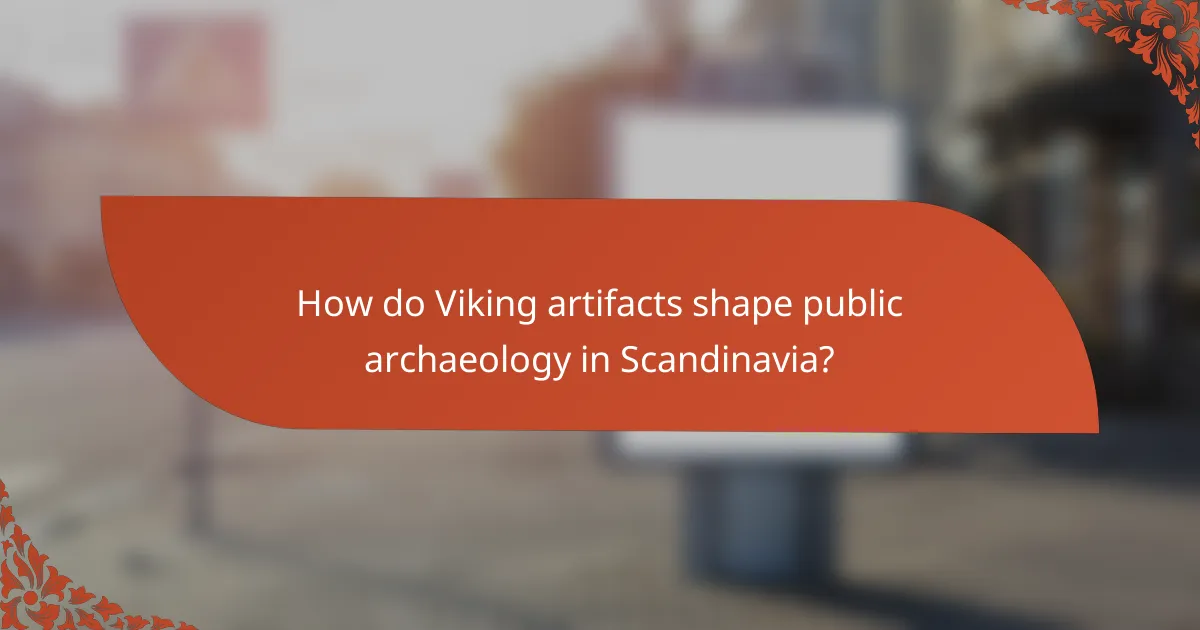
How do Viking artifacts shape public archaeology in Scandinavia?
Viking artifacts significantly influence public archaeology in Scandinavia by fostering community involvement and enhancing educational outreach. These artifacts serve as tangible connections to the region’s history, encouraging local populations to engage with their cultural heritage.
Community engagement initiatives
Community engagement initiatives centered around Viking artifacts often include archaeological digs, workshops, and public lectures. These programs invite local residents to participate in the discovery and preservation of their history, creating a sense of ownership and pride in cultural heritage.
For example, some sites offer volunteer opportunities during excavation seasons, allowing community members to work alongside archaeologists. This hands-on experience not only educates participants but also strengthens community ties through shared historical exploration.
Educational programs in museums
Museums in Scandinavia frequently develop educational programs that highlight Viking artifacts, aiming to enhance public understanding of the Viking Age. These programs often include guided tours, interactive exhibits, and lectures that delve into the significance of the artifacts and their historical context.
Many museums also collaborate with schools to create tailored educational experiences, such as field trips focused on Viking history. These initiatives help students connect with their heritage and foster an appreciation for archaeology as a discipline.
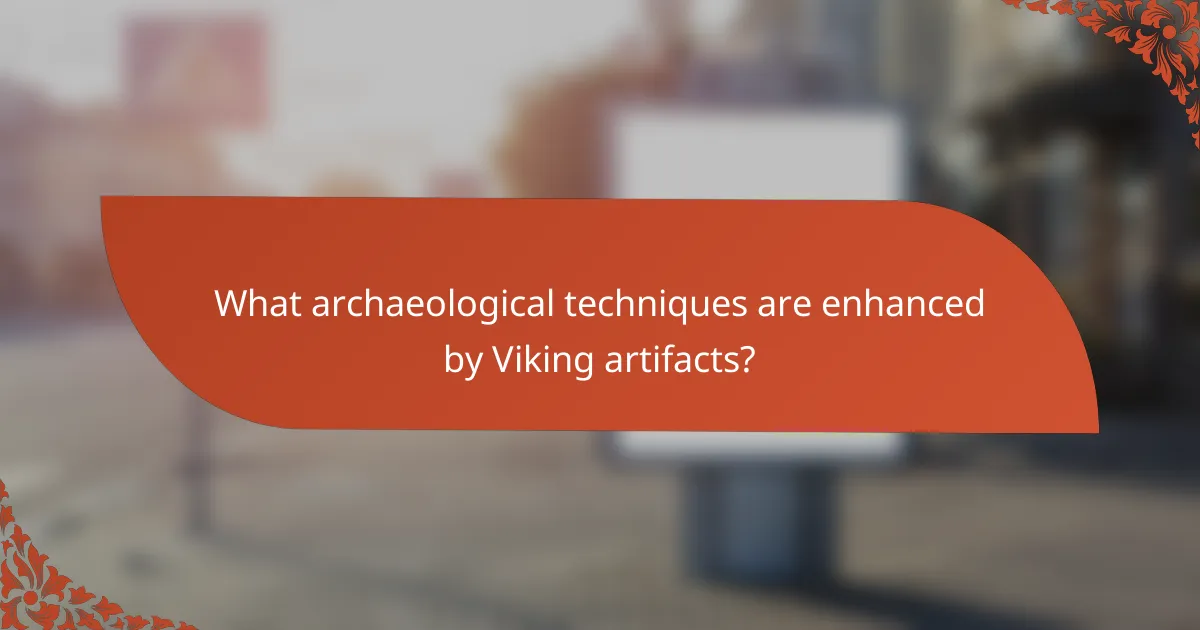
What archaeological techniques are enhanced by Viking artifacts?
Viking artifacts significantly enhance archaeological techniques by providing insights into historical contexts and material culture. These artifacts inform stratigraphic excavation methods and artifact conservation techniques, allowing archaeologists to better understand Viking society and preserve their findings.
Stratigraphic excavation methods
Stratigraphic excavation methods involve digging in layers to understand the chronological sequence of artifacts and features. Viking artifacts, often found in distinct strata, help establish timelines and cultural phases, revealing how different Viking groups interacted with their environment over time.
When employing stratigraphic techniques, archaeologists should carefully document each layer’s context, including the depth and associated artifacts. This practice ensures accurate dating and interpretation, which is crucial for reconstructing Viking history.
Artifact conservation techniques
Artifact conservation techniques focus on preserving Viking artifacts for future study and public display. These techniques often include cleaning, stabilization, and sometimes restoration, depending on the material composition and condition of the artifacts.
For example, metal artifacts may require electrolysis to remove corrosion, while organic materials like wood or textiles need careful drying and treatment to prevent deterioration. Adhering to established conservation standards, such as those from the International Council of Museums, is essential to maintain the integrity of these historical items.

How do Viking artifacts inform cultural heritage preservation?
Viking artifacts play a crucial role in cultural heritage preservation by providing insights into historical practices, societal structures, and artistic expressions. These artifacts guide preservation efforts, ensuring that significant cultural narratives are maintained and communicated effectively.
Legal frameworks for artifact protection
Legal frameworks for protecting Viking artifacts vary by country but generally include laws that regulate excavation, ownership, and exportation. For instance, in Sweden, the Cultural Heritage Act mandates that all archaeological finds belong to the state, promoting responsible stewardship and public access.
Compliance with these laws is essential for archaeologists and collectors alike. Failing to adhere to regulations can result in penalties, including fines or confiscation of artifacts. It’s crucial to consult local laws before engaging in any excavation or collection activities.
Impact on local tourism
The presence of Viking artifacts significantly boosts local tourism by attracting visitors interested in history and archaeology. Museums and historical sites showcasing these artifacts often see increased foot traffic, which can lead to economic benefits for surrounding communities.
For example, sites like the Viking Ship Museum in Oslo draw thousands of tourists annually, contributing to local businesses. Communities can enhance this impact by developing guided tours, educational programs, and events that celebrate their Viking heritage, fostering a deeper connection between visitors and the local culture.
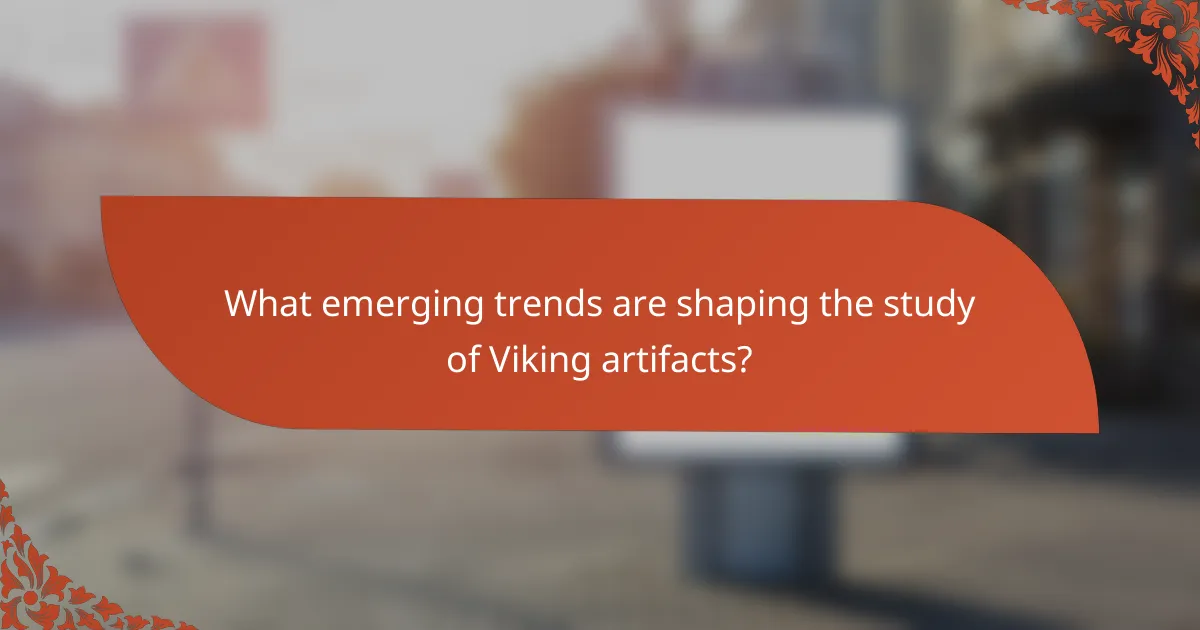
What emerging trends are shaping the study of Viking artifacts?
Emerging trends in the study of Viking artifacts include advancements in digital archaeology and the integration of interdisciplinary approaches. These trends enhance the analysis and interpretation of artifacts, leading to deeper insights into Viking culture and society.
Digital archaeology advancements
Digital archaeology is revolutionizing the study of Viking artifacts by utilizing technologies such as 3D modeling, GIS mapping, and virtual reality. These tools allow researchers to create detailed representations of artifacts and sites, making it easier to analyze spatial relationships and context.
For example, 3D scanning can capture intricate details of artifacts, which can then be shared globally for collaborative research. This approach not only preserves the artifacts digitally but also facilitates remote access for scholars and enthusiasts alike.
Moreover, digital databases are becoming essential for cataloging and analyzing Viking artifacts. These databases can store vast amounts of data, enabling researchers to identify patterns and trends across different sites and time periods.



